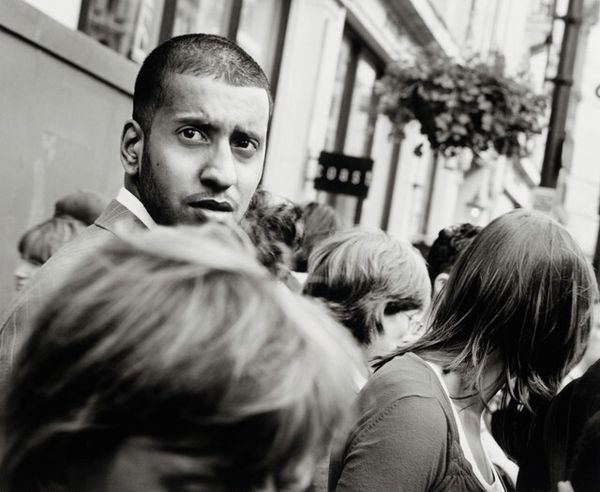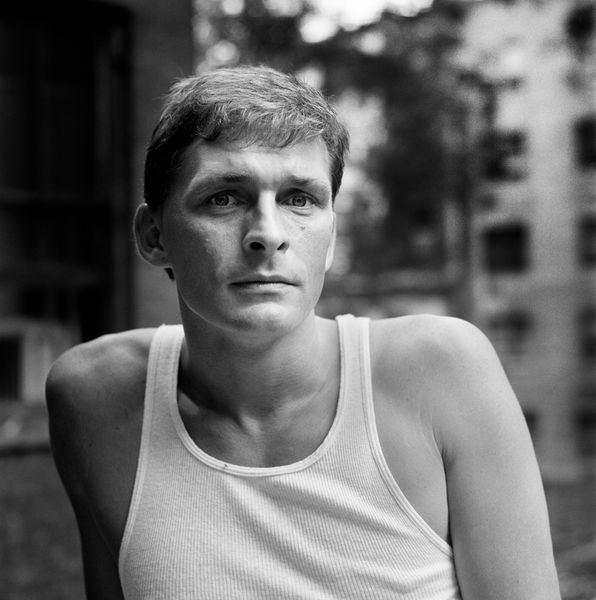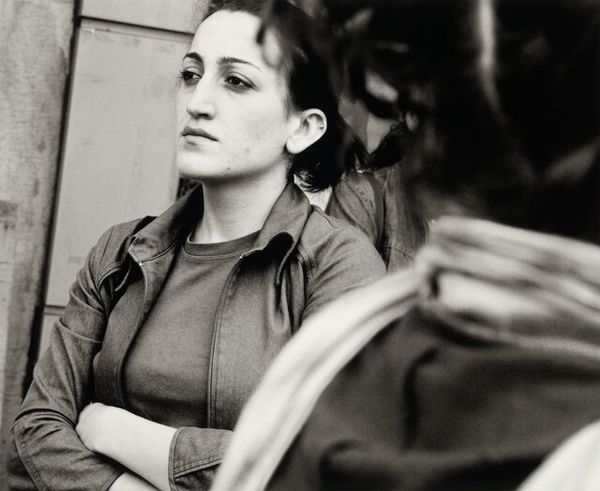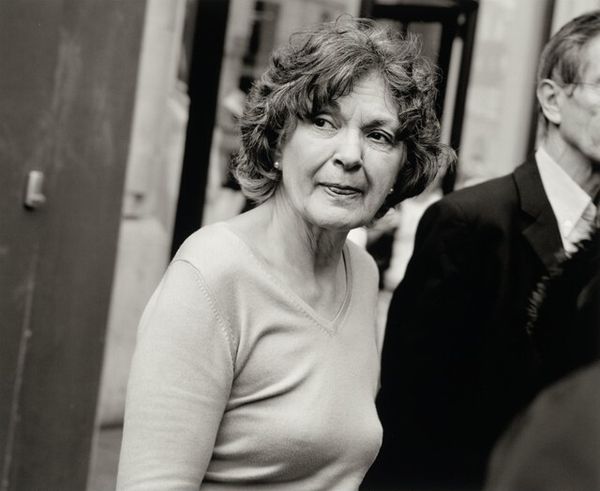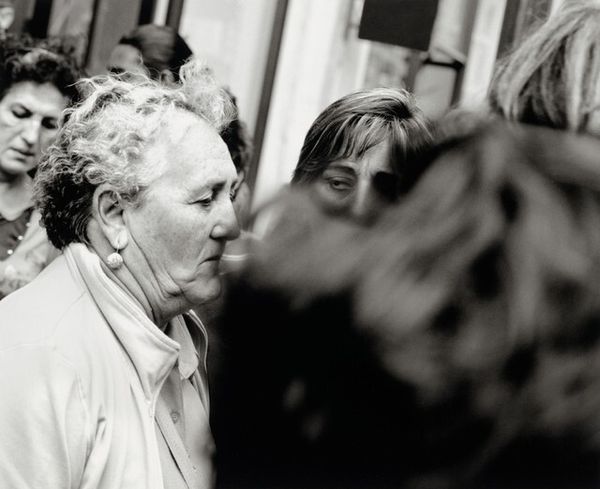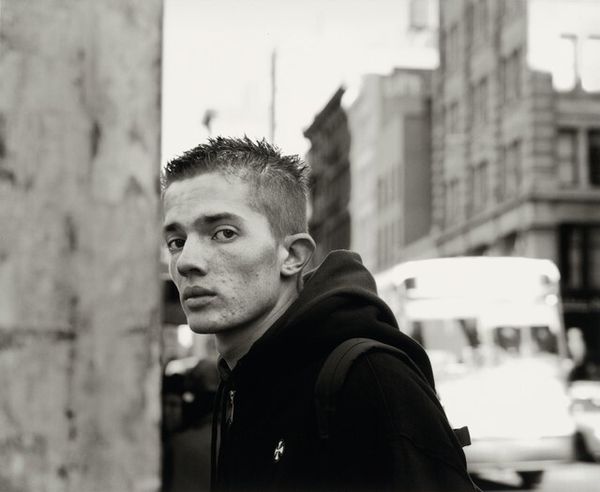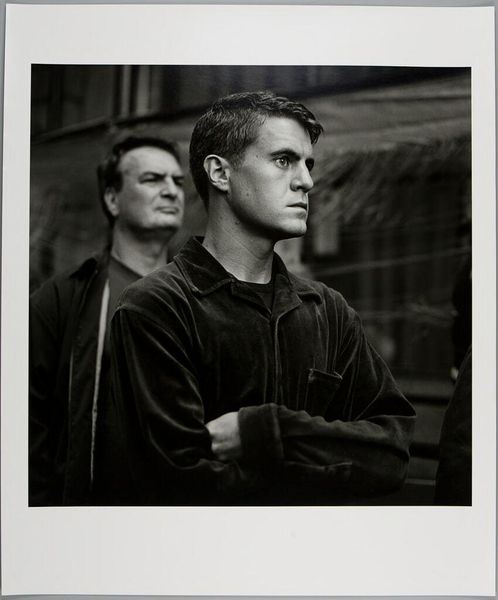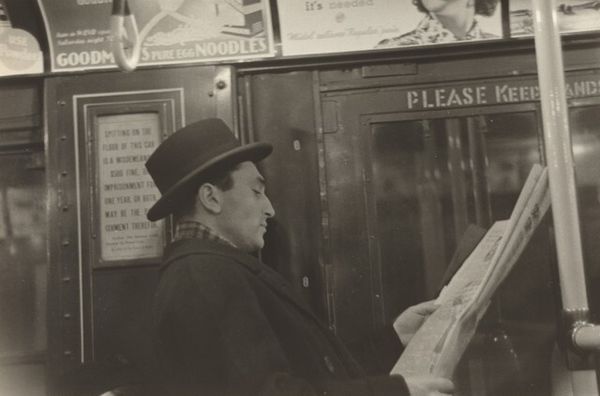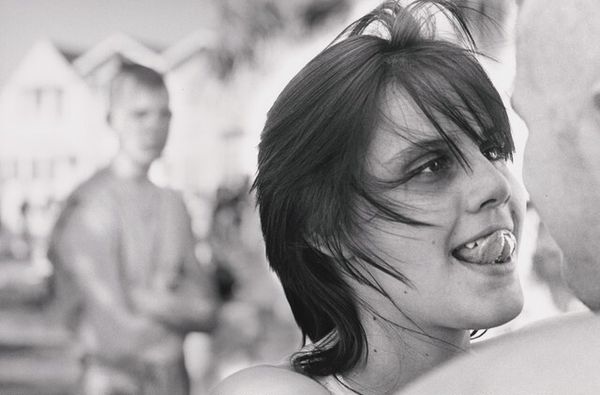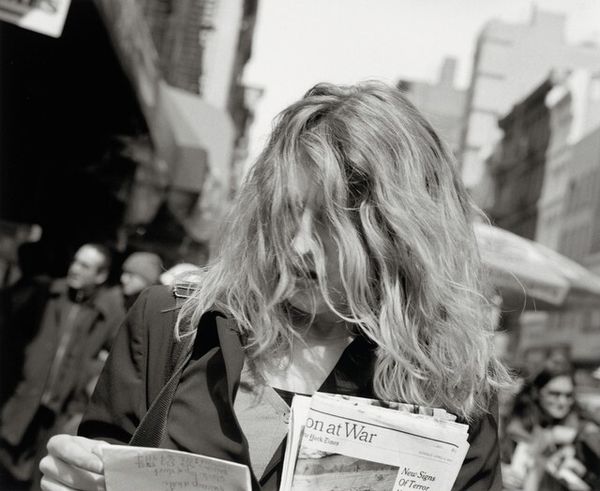
photography
#
portrait
#
black and white photography
#
street-photography
#
photography
#
historical photography
#
black and white
Dimensions: image: 40.64 × 49.53 cm (16 × 19 1/2 in.) sheet: 58.42 × 67.31 cm (23 × 26 1/2 in.)
Copyright: National Gallery of Art: CC0 1.0
Curator: This arresting black and white photograph is titled "London, 2003, on Oxford Street," possibly taken sometime between 2003 and 2014 by Leo Rubinfien. The image grabs you, doesn't it? Editor: It does. The starkness of the monochrome, combined with the slightly awkward composition – cutting off the figure on the right and positioning the subjects so closely – it creates a certain tension. Almost an uneasy feeling. Curator: I agree. This work speaks volumes about the public gaze and what it means to exist and navigate through public space while being racialized or marginalized. It also explores notions of visibility, particularly when juxtaposed with more anonymous urban environments. What social narratives do you find embedded within the subject's face, the environment, and their position? Editor: Well, I’m drawn to the interplay of light and shadow. Look how Rubinfien uses them to sculpt the faces. The strong contrast emphasizes certain features while obscuring others, contributing to this sense of immediacy. The way he captured it, he definitely knew how to make the photo look alive. It makes me think of that compositional arrangement within the picture plane, and how it also helps to develop rhythm and tension in the viewer's eye. Curator: Consider what it signifies when certain faces become historical markers. Do these anonymous figures serve as archetypes? Whose stories do they reflect? Editor: It is more of a case about semiotics and meaning of certain things that are present in the picture. In addition to all that the image contains, it makes me think about how form and function come into play in the creation of the subject; not as just an existing matter that occurs within this certain space, but also that its components add to the value as a whole, which make me notice the deeper substance even more. It is hard to explain what else that I see, to me it's very visual. Curator: Fascinating! Thinking about this image now, I can reflect more about issues concerning race and urban identity formation. Editor: And I am interested in how the forms created are meant to symbolize greater meaning about our social reality and visual knowledge of the components, thanks for highlighting it.
Comments
No comments
Be the first to comment and join the conversation on the ultimate creative platform.
